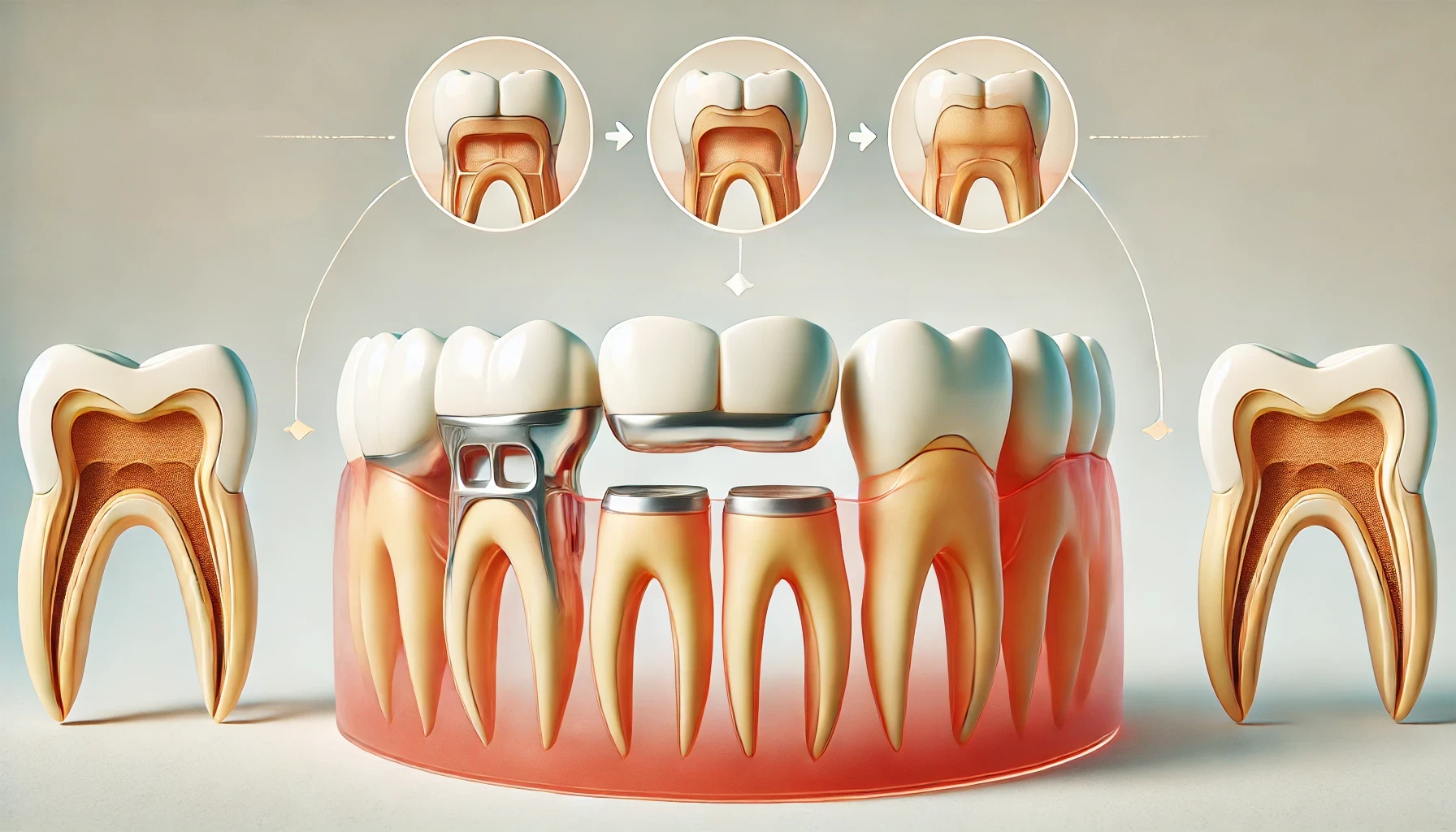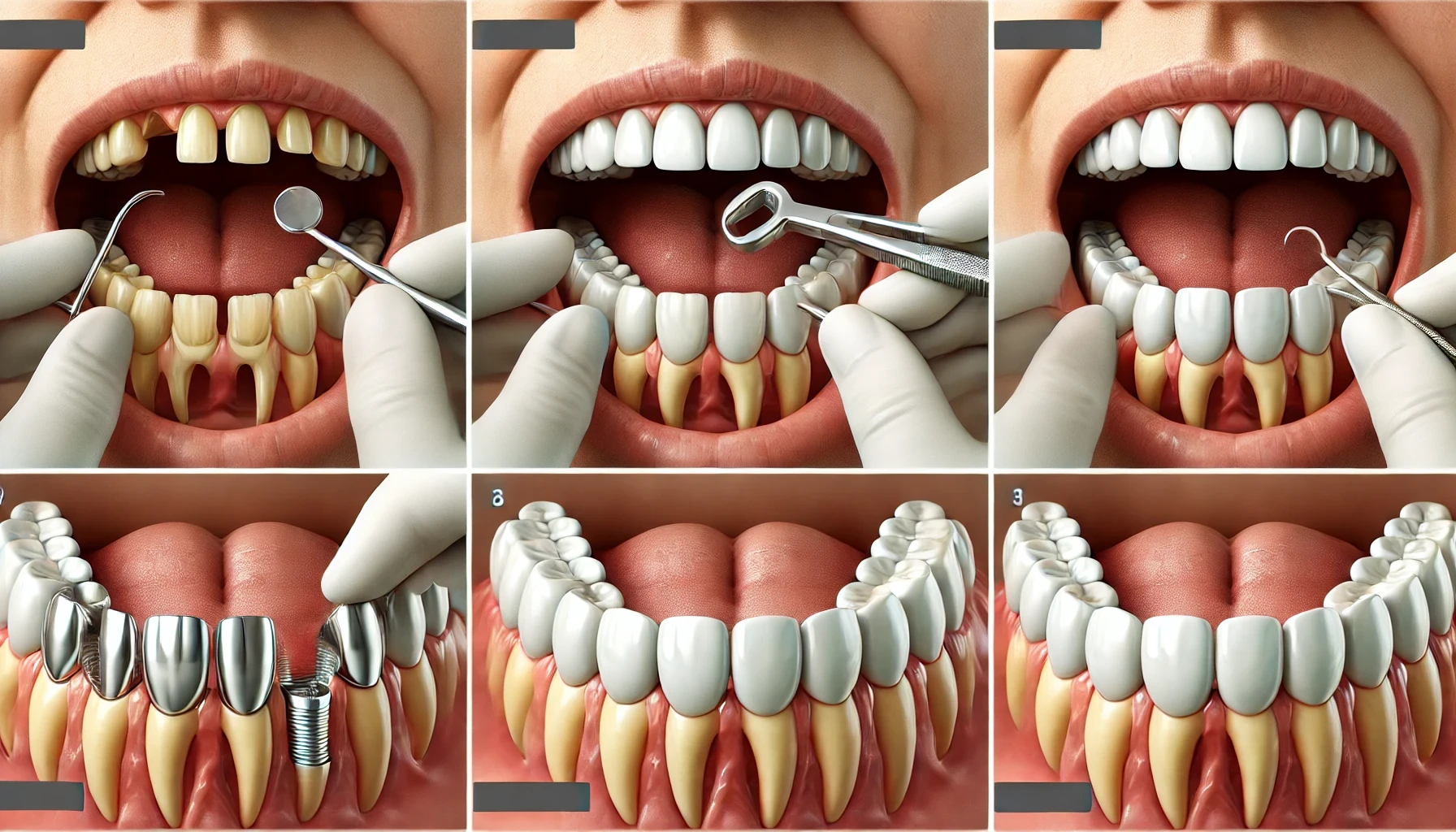
Dental bridges are a common solution for replacing missing teeth, but over time, a dental bridge replacement may be needed due to wear, damage, or changes in your oral health. If you’re considering dental bridge replacement, it’s important to understand the process and how to ensure the best results.
This article outlines the four essential steps involved in replacing a dental bridge to restore both functionality and aesthetics to your smile.
Why replace a dental bridge?
A dental bridge may need replacement due to various factors affecting its integrity and the health of your mouth. Over time, bridges can suffer from wear and tear, resulting in a less secure fit or exposing underlying structures to damage.
Changes in your gums and surrounding teeth can also impact the bridge’s effectiveness, leading to discomfort or difficulty in maintaining oral hygiene. Additionally, advances in dental materials and technologies may offer improved options for aesthetics and durability.
Replacing a bridge not only restores functionality and appearance to your smile but also ensures better oral health by addressing these issues promptly and efficiently.
Types of Dental Bridges: Which is Best?
Before proceeding with replacement, it’s important to determine the best type of dental bridge for your specific needs. There are four types of dental bridges:
- Traditional Fixed Bridge: This is the most common type of bridge, consisting of a false tooth (pontic) held in place by crowns on either side that are attached to your natural teeth.
- Cantilever Bridge: This type of bridge is used when there is only one natural tooth adjacent to the missing tooth, making it a suitable anchor for the pontic.
- Maryland Bridge: Also known as a resin-bonded bridge, this option uses metal or porcelain wings or more attached to the back of adjacent teeth for support instead of crowns.
- Implant-Supported Bridge: Similar to traditional fixed bridges, but instead of attaching to natural teeth, the pontic is anchored onto dental implants inserted into the jawbone.
The best type of bridge for you will depend on factors such as your oral health, budget, and personal preferences. Consulting with your dentist can help determine the most suitable option for your specific case.
The process of dental bridge replacement
Replacing a dental bridge typically involves a few critical steps to ensure a successful outcome. Initially, your dentist will conduct a thorough examination, including x-rays, to assess the condition of your existing bridge, supporting teeth, and surrounding gums.
This is followed by the removal of the old bridge and the preparation of the anchor teeth, which may crown involve reshaping. The next step is creating an impression of your mouth to fabricate a custom bridge that fits accurately.
While waiting for the permanent bridge, a temporary one may be placed to protect your teeth. Finally, the new bridge is installed, adjusted for a perfect fit, and securely bonded in place.
Here are the four key steps to consider when replacing a dental bridge:
- Consultation and evaluation: Your dentist will begin with a thorough evaluation of the bridge and surrounding teeth to determine the need for replacement and identify any underlying issues.
- Preparation of the teeth and gums: If your tooth or gums have changed, your dentist will prepare the area by reshaping the teeth supporting the bridge or addressing gum health.
- Placement of the new bridge: The new dental bridge will be custom-made to fit your mouth, and once ready, it will be securely placed using dental cement or bonding.
- Post-procedure care: After your new bridge is placed, proper care is essential to ensure its longevity, including regular brushing, flossing, and dental check-ups.
Summary
Replacing a dental bridge involves a straightforward process that can restore the function and appearance of your smile. The four essential steps — evaluation, preparation, placement, and maintenance — are crucial for a successful replacement. By following these steps and working closely with your dentist, you can enjoy the long-lasting benefits of a new dental bridge that improves both your oral health and confidence.
Questions and Answers
When should a dental bridge be replaced?
A dental bridge may need replacement when it becomes loose, worn, or damaged, or if there are changes to the surrounding teeth or gums.
How does my dentist evaluate my current bridge?
Your dentist will examine the bridge and supporting teeth to ensure that they are still in good condition and assess whether a replacement is necessary.
What happens if I don’t replace a damaged dental bridge?
If not replaced, a damaged dental bridge can cause further issues, such as gum irritation, tooth decay, or shifting of surrounding teeth.
How long does the replacement process take?
The process typically requires two to three visits: one for the evaluation and preparation, and one for the placement of the new bridge.
Will I need anesthesia during the replacement procedure?
Local anesthesia is usually administered to ensure your comfort during the preparation and placement stages.
Can I eat normally after getting a new dental bridge?
Yes, but it’s recommended to avoid hard or sticky foods for the first few days after getting the new have a bridge.
How long will the new dental bridge last?
With proper care, a dental bridge can last between 10 to 15 years, or even longer in some cases.
Do I need to take special care of my new bridge?
Yes, maintaining proper oral hygiene, including regular brushing and flossing, will help prolong the life of in the your dental bridge.
What materials are used in a dental bridge?
Dental bridges can be made from materials like porcelain, ceramic, or metal, depending on your needs and preferences.
How do I know if I’m a candidate for a dental bridge replacement?
Your dentist will evaluate the condition of your teeth and gums to determine whether a bridge replacement is the best option for you.











